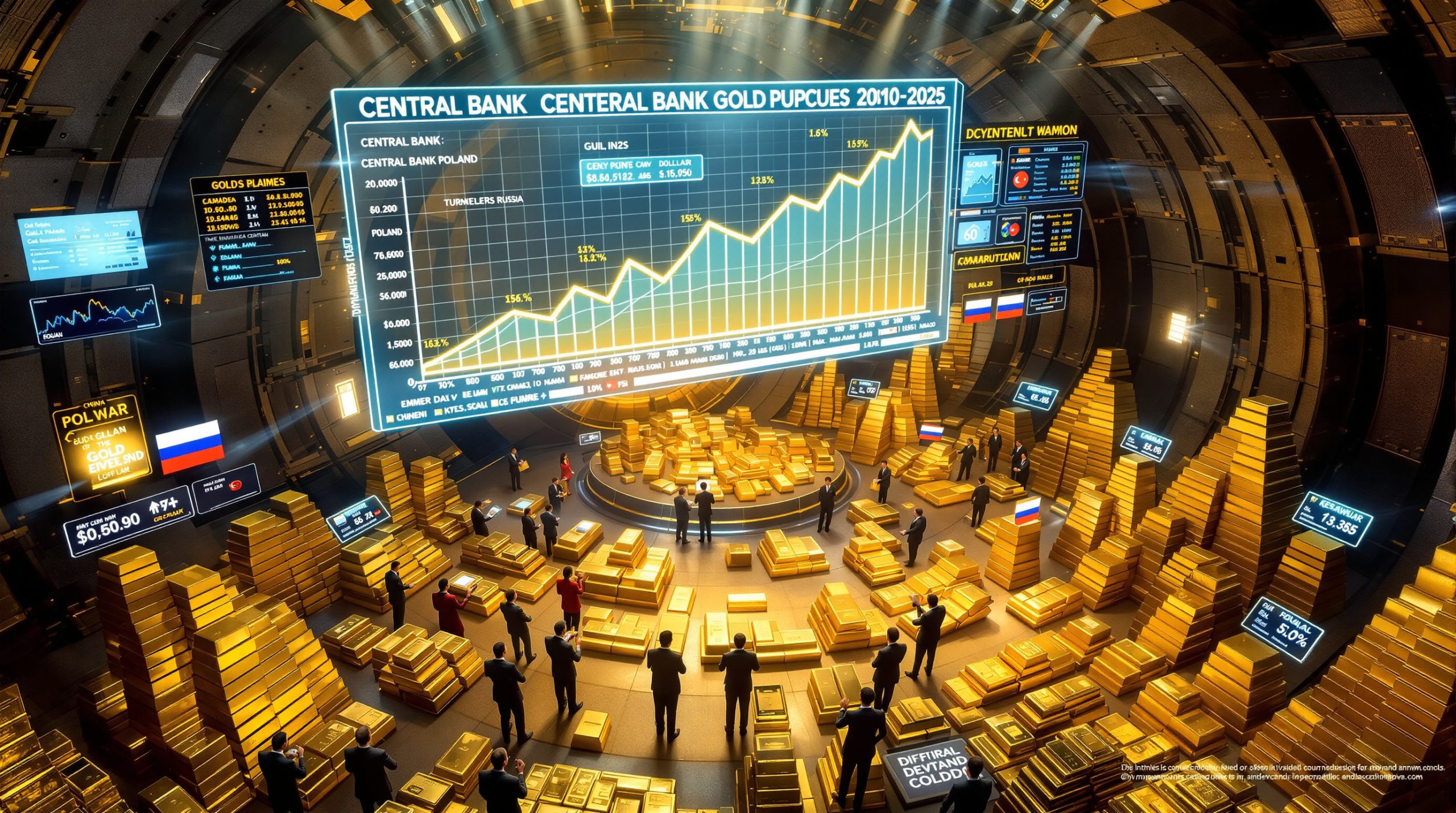Understanding the Iron Ore 61% Fe Fines Index: Specifications and Market Impact
The iron ore 61% Fe fines index serves as a crucial price benchmark in the global commodities market, providing transparent pricing for one of the world's most important industrial raw materials. This index reflects the value of mid-grade iron ore with approximately 61% iron content delivered to Chinese ports, primarily Qingdao. Understanding this index is essential for anyone involved in the steel supply chain, from miners to traders to steel manufacturers.
The importance of standardized iron ore indices cannot be overstated in today's global commodity markets. They provide the foundation for physical contracts, financial derivatives, and strategic planning across the mining industry evolution. As market dynamics evolve and ore qualities change, the specifications that underpin these indices require careful maintenance to ensure they remain relevant to actual trading patterns.
What Is the Iron Ore 61% Fe Fines Index?
Definition and Market Significance
The iron ore 61% Fe fines index provides a benchmark price for mid-grade iron ore fines with approximately 61% iron content delivered to Chinese ports. This specific grade represents a substantial portion of the global seaborne iron ore trade and serves as a key reference point for contract negotiations, spot transactions, and derivatives markets.
The index specifically tracks iron ore fines, which are crushed and screened iron ore particles typically measuring less than 10mm in size. These fines are the predominant form of iron ore used in blast furnaces worldwide, making the 61% Fe index particularly relevant to mainstream steelmaking operations.
As a price reporting mechanism, the iron ore 61% Fe fines index specifications track material commonly traded in the CFR (Cost and Freight) Qingdao market. This reflects China's position as the world's largest iron ore importer and Qingdao's significance as a major port of entry for these materials.
Historical Development
Iron ore pricing has undergone a remarkable evolution over the past two decades. Until the early 2000s, prices were primarily set through annual benchmark negotiations between major miners and steel producers. These opaque, bilateral negotiations often favored larger market participants and created significant price discontinuities during market disruptions.
The shift toward index-based pricing began gaining momentum around 2008-2010, as market participants sought greater transparency and flexibility. This transition represented one of the most significant structural changes in commodity markets in recent history, enabling more responsive pricing that better reflected actual supply and demand conditions.
The development of standardized indices like the 61% Fe fines index has democratized iron ore pricing, giving smaller miners and steel producers access to the same price information as industry giants. This evolution has enhanced market efficiency while providing more sophisticated risk management tools for all participants.
How Are Iron Ore Index Specifications Determined?
Methodology Governance
Iron ore index specifications follow rigorous methodologies designed to comply with the International Organization of Securities Commissions (IOSCO) principles for Price Reporting Agencies (PRAs). These principles establish global standards for benchmark price assessments to ensure they accurately reflect physical market conditions.
The methodologies encompass all elements of the pricing process, including data collection procedures, assessment techniques, specification definitions, and publication frequencies. These frameworks undergo regular reviews to ensure they continue to capture market realities accurately and maintain regulatory compliance.
Price reporting agencies maintain dedicated methodology teams responsible for conducting regular consultations with market participants. These consultations provide opportunities for stakeholders to contribute feedback on potential specification adjustments or methodology enhancements, ensuring the indices remain aligned with actual trading practices.
Key Quality Parameters
The iron ore 61% Fe fines index specifications include multiple quality parameters that significantly impact the material's value and usability in steelmaking:
- Iron (Fe) content: The primary value component, targeted at 61.0%
- Silica (SiO₂) content: An impurity that typically ranges from 3.5-4.5%
- Alumina (Al₂O₃) content: An undesirable component typically between 2.0-2.5%
- Phosphorus (P) content: Limited to a maximum of 0.10% due to its negative impact on steel quality
- Sulfur (S) content: Restricted to a maximum of 0.02% to minimize environmental and quality issues
- Moisture content: Typically ranges from 8-10%, affecting transportable weight and handling properties
- Size distribution: Predominantly -10mm material with specifications for maximum oversized material
Each of these parameters influences the material's performance in blast furnaces and its overall value to steelmakers. The specifications aim to reflect the most commonly traded quality in the market while providing a stable reference point for quality adjustments.
Data Collection Process
Reliable index calculation depends on robust data collection processes. Price reporting agencies gather transaction information through multiple channels:
- Direct submissions from market participants, including miners, traders, and steel producers
- Regular surveys of active market players to gather information on recent deals
- Market surveillance to identify and verify reported transactions
- Application of statistical techniques to normalize data and identify outliers
The data collection process typically prioritizes actual transactions, followed by firm bids and offers, and finally market participants' assessments of prevailing values. This hierarchy ensures that indices remain anchored to real commercial activity while maintaining sufficient liquidity for daily assessments.
Why Do Iron Ore Specifications Matter?
Price Differentiation
Iron ore specifications directly influence price formation in the marketplace. The chemical and physical properties defined in the index create the framework for valuing different ore types:
- Each percentage point of Fe content above or below the 61% baseline typically corresponds to a premium or discount of approximately $1.50-$2.50 per dry metric ton
- Impurities like silica and alumina generally result in penalties of $1.00-$1.50 per percentage point above specified limits
- Phosphorus content, particularly critical for certain steel grades, can trigger significant discounts when exceeding maximum thresholds
- Physical characteristics such as particle size distribution affect handling efficiency and blast furnace performance
These price differentials form the basis of a complex value-in-use model that steelmakers use to optimize their raw material mix. Understanding these relationships is crucial for both producers and consumers of iron ore to maximize economic value.
Contract Settlement
The iron ore 61% Fe fines index specifications serve as the foundation for numerous commercial arrangements:
- Physical delivery contracts often reference the index as the base price, with adjustments for specific quality parameters
- Futures contracts on exchanges like the Singapore Exchange (SGX) and Dalian Commodity Exchange (DCE) settle against published index values
- Term contracts between miners and steel producers frequently incorporate floating prices linked to index averages
- Quality premiums and discounts in supply agreements are calculated relative to the standard specifications
This widespread adoption of index-based pricing has transformed iron ore from a relatively illiquid commodity with opaque pricing to one of the most transparent and actively traded bulk materials in the world.
Market Transparency
Standardized specifications enable effective market transparency by:
- Providing a common reference point for comparing different ore sources
- Facilitating efficient price discovery through clearly defined quality parameters
- Reducing information asymmetry between market participants
- Supporting the development of liquid derivatives markets
- Enabling fair valuation of iron ore inventories and assets
This transparency benefits the entire supply chain, from mining companies making investment decisions to steel producers optimizing procurement strategies to investors assessing market conditions.
What Factors Influence Index Specification Changes?
Evolving Ore Quality
Iron ore deposits naturally vary in quality over time. As mines progress through different geological zones, the chemical composition of extracted materials can shift significantly. Major mining regions like Australia's Pilbara and Brazil's Iron Quadrangle have experienced gradual changes in ore quality as higher-grade zones become depleted and operations move into different areas.
These natural variations in resource quality occasionally necessitate adjustments to index specifications to maintain alignment with commonly traded materials. If the average quality of mainstream products diverges substantially from the index specifications, the benchmark risks becoming disconnected from actual market activity.
Miners may also implement processing changes that alter product specifications, such as deploying beneficiation technology to enhance Fe content or reduce impurities. These operational decisions can gradually shift the prevailing quality in the marketplace, potentially triggering specification reviews.
Market Participant Feedback
Index providers regularly solicit input from a diverse range of stakeholders to ensure specifications remain relevant:
- Iron ore producers contribute perspectives on extraction capabilities and product development trends
- Steel manufacturers provide insights on technical requirements and value-in-use considerations
- Trading companies offer visibility into liquidity patterns and quality premiums/discounts
- Industry associations help aggregate feedback from multiple market participants
- Regulatory bodies ensure compliance with financial market standards
This continuous feedback loop helps index providers identify emerging quality trends, shifting trading patterns, or technological developments that might warrant specification adjustments.
Technological Developments
Advancements in steelmaking technology can significantly influence the desirability of certain ore characteristics:
- Enhanced blast furnace efficiency may alter the optimal chemical composition of iron ore feed
- Growing adoption of direct reduced iron (DRI) processes requires specific ore qualities with lower gangue content
- Environmental regulations increasingly favor higher-grade ores that produce fewer emissions during processing
- Energy efficiency considerations prioritize ores with better reducibility and lower fuel requirements
As these technological shifts occur, they may gradually alter buying preferences in the marketplace, potentially necessitating corresponding adjustments to index specifications.
How Are Specification Changes Implemented?
Consultation Process
Before modifying index specifications, providers typically conduct structured consultation processes to gather market feedback and assess potential impacts. The recent consultation on iron ore 61% Fe fines specifications demonstrates this approach, with Fastmarkets conducting a 30-day consultation period from July 10 to August 9, 2025.
These consultations typically include:
- Publication of proposed changes with clear rationales
- Solicitation of feedback from a diverse range of market participants
- Assessment of potential market disruptions or contractual implications
- Evaluation of implementation timelines and transition measures
The consultation process aims to balance the need for relevant, accurate specifications against the market's preference for consistency and stability in benchmark references.
Documentation Requirements
Specification changes must be thoroughly documented to maintain market confidence and regulatory compliance:
- Proposed changes are published with detailed explanations of the rationale
- Consultation feedback is summarized while maintaining participant confidentiality
- Final decisions are announced with clear implementation timelines
- Methodology documentation is updated to reflect the revised specifications
This comprehensive documentation ensures transparency throughout the process and provides a clear audit trail for future reference.
Implementation Timeline
The specification change process typically follows a structured timeline designed to minimize market disruption:
- Initial announcement of proposed changes with supporting analysis
- Consultation period (typically 30 days) for stakeholder feedback
- Review of consultation responses and final decision announcement
- Implementation date, often with a notice period of 30-90 days
- Potential transition measures such as parallel publication of old and new specifications
This measured approach gives market participants sufficient time to adjust contracts, trading strategies, and risk management practices to accommodate the revised specifications.
What Was the Recent Consultation About?
Quality Evolution Context
The recent consultation by Fastmarkets addressed evolving quality trends in mid-grade iron ore fines commonly traded in the CFR Qingdao market. This review was prompted by observed changes in the typical chemical composition of mainstream products in this category.
These quality shifts reflect the natural evolution of ore bodies as mining progresses through different geological zones, as well as potential changes in blending or processing practices at major mining operations. The consultation sought to determine whether these changes were significant enough to warrant corresponding adjustments to the index specifications.
As ore quality is dynamic rather than static, periodic reviews like this consultation are essential to ensure index specifications remain aligned with typical market quality. This alignment maintains the index's relevance and reliability as a price benchmark.
Consultation Period
The consultation ran from July 10 to August 9, 2025, providing market participants a full month to evaluate potential specification adjustments and submit feedback. This timeframe aligns with standard practice for methodology reviews, balancing the need for thorough stakeholder input against the imperative for timely decision-making.
During this period, market participants could provide feedback on whether the current iron ore 61% Fe fines specifications remained appropriate for the physical market under indexation. This feedback likely included data on recent transaction qualities, changing production patterns, and potential impacts of specification adjustments.
Final Decision
Following the consultation, Fastmarkets announced its decision to maintain the current iron ore 61% Fe fines specifications. This decision prioritized consistency in the face of evolving mid-grade fines quality, recognizing the importance of benchmark stability for market participants.
The announcement noted that this decision would have no material impact on pricing, suggesting that while quality variations had been observed, they remained within acceptable ranges relative to the existing specifications. This outcome reflects the careful balance index providers must maintain between reflecting market evolution and preserving benchmark continuity.
By maintaining consistent specifications, Fastmarkets provided market participants with continued certainty for contract settlement and price referencing while acknowledging the ongoing evolution of ore quality in the marketplace.
How Does the Index Compare to Other Iron Ore Benchmarks?
Benchmark Comparison
The iron ore 61% Fe fines index operates within a broader ecosystem of iron ore benchmarks that serve different market segments:
| Index Type | Fe Content | Typical Premium/Discount | Key Market |
|---|---|---|---|
| High-Grade Fines | 65% Fe | Premium to 62% index | Steel mills with environmental restrictions |
| Mid-Grade Fines | 61-62% Fe | Benchmark pricing | General steel production |
| Low-Grade Fines | 58% Fe | Discount to 62% index | Cost-sensitive steel producers |
| Pellet Premium | Various | Add-on to base fines price | Direct reduction and blast furnace feed |
This spectrum of benchmarks reflects the diverse quality requirements across the steel industry. While the 61% Fe fines index focuses on mid-grade material, other indices serve important niches in the market, with significant price differentials developing between grades based on supply-demand dynamics and steelmaking economics.
The quality spread between different grade indices often serves as an important indicator of market conditions. During periods of strong steel margins and environmental enforcement, high-grade premiums typically expand as mills prioritize productivity and emissions reduction. Conversely, during margin compression, lower-grade discounts may narrow as mills focus on input cost minimization.
Regional Variations
Different regions emphasize different quality parameters based on local steelmaking practices, regulatory environments, and historical preferences:
- Chinese buyers typically focus heavily on silica and alumina content due to their impact on blast furnace slag volume
- European buyers often place greater emphasis on phosphorus limits to support production of higher-quality steel grades
- Indian domestic markets have distinct size specifications reflecting local handling and processing capabilities
- Brazilian specifications may emphasize low moisture content to maximize transportable weight on long-distance shipments
These regional variations have created specialized sub-indices in some markets, though the primary 61-62% Fe benchmarks remain the most widely referenced globally.
What Are the Applications of the Iron Ore Index?
Physical Market Uses
The iron ore 61% Fe fines index serves multiple functions in physical iron ore markets:
- Price reference for spot transactions between miners and steel producers
- Basis for term contracts with floating pricing mechanisms that adjust to market conditions
- Framework for quality premium and discount calculations when material differs from standard specifications
- Valuation tool for port inventories and material in transit
This versatility has made index-based pricing the dominant approach in iron ore markets, displacing earlier fixed-price models that lacked responsiveness to changing market conditions.
The index also facilitates more sophisticated procurement strategies, allowing buyers to blend different ore types to achieve optimal cost-performance balance while using the index as a common valuation framework.
Financial Market Applications
In financial markets, the iron ore 61% Fe fines index enables:
- Settlement of futures contracts that allow price risk management
- Creation of structured products like swaps and options for customized hedging
- Development of investment vehicles that provide exposure to iron ore price trends
- Benchmarking of trading performance for financial participants
These financial applications have dramatically expanded the iron ore ecosystem beyond physical market participants, bringing additional liquidity and sophisticated risk management tools to the market.
The growth of iron ore derivatives has created new career specializations in financial markets, with dedicated iron ore traders and analysts focusing exclusively on this commodity class that was barely financialized a decade ago.
Strategic Planning
For industry participants, the iron ore 61% Fe fines index facilitates:
- Capital investment decisions based on transparent price discovery
- Production planning that incorporates quality optimization against index specifications
- Marketing strategy development with clear pricing references
- Financial forecasting using publicly available benchmark prices
This strategic value extends beyond miners and steel producers to equipment suppliers, logistics providers, and financing institutions that support the iron ore supply chain.
How Is the Index Calculated?
Data Normalization
Raw transaction data undergoes normalization to account for variations from standard specifications:
- Quality adjustments convert non-standard material to equivalent 61% Fe value
- Delivery term standardization equalizes CFR, FOB, and other bases to the specified delivery point
- Payment term adjustments normalize different credit periods to standard terms
- Volume weighting ensures larger transactions appropriately influence the final assessment
These normalization procedures ensure the index reflects a consistent product definition despite the natural variations in actual traded material.
The normalization process requires sophisticated models that quantify the value impact of each quality parameter deviation. These models are regularly reviewed and updated based on market feedback to ensure they accurately reflect current value-in-use relationships.
Statistical Methodology
The calculation typically employs several statistical techniques to ensure robustness:
- Volume-weighted averaging gives appropriate influence to larger transactions
- Outlier detection identifies and excludes potentially anomalous data points
- Time-weighted approaches may be used during low liquidity periods to maintain representativeness
- Confidence intervals help assess the reliability of the resulting assessment
These methodologies must balance statistical rigor with practical market realities, ensuring the index remains both mathematically sound and commercially relevant.
Publication Frequency
The iron ore 61% Fe fines index is typically published:
- Daily for maximum responsiveness to market movements
- At consistent times to support predictable trading patterns
- With clear timestamps indicating the assessment period
- Following established fallback procedures for unusual market conditions
This regular publication rhythm has become integral to market functioning, with physical and financial transactions often timed around index publications.
What Are Current Market Trends Affecting the Index?
Supply-Side Factors
Several supply dynamics currently influence the iron ore market and, by extension, the 61% Fe fines index:
- Production volumes from major mining regions in Australia, Brazil, and elsewhere
- Shipping costs and availability, which affect delivered prices to key markets
- Weather-related disruptions, particularly during cyclone season in Australia and rainy seasons in Brazil
- Infrastructure constraints in key logistics corridors that can create regional price disparities
These supply factors interact with quality considerations, as production constraints often affect different ore grades differently, potentially widening or narrowing quality-based price spreads.
Demand Influences
Steel industry trends shape demand patterns for various iron ore grades:
- Chinese steel production policies, including capacity controls and utilization restrictions
- Environmental regulations that may favor higher-grade ores with lower emissions profiles
- Construction and manufacturing activity in major economies driving overall steel demand
- Relative competitiveness of different steelmaking routes (blast furnace vs. electric arc furnace)
These demand patterns can significantly influence the relative value of 61% Fe fines compared to higher and lower grades, affecting price relationships between different indices.
Green Steel Transition
The industry's decarbonization efforts are creating new quality considerations:
- Growing preference for higher-grade ores that reduce emissions per ton of steel produced
- Increasing interest in direct reduction-grade materials for hydrogen-based steelmaking
- Emerging carbon pricing mechanisms that may create additional cost differentials based on ore quality
- Integration of ESG (Environmental, Social, Governance) metrics into procurement decisions
These trends may gradually shift quality preferences in the market, potentially influencing future specification reviews for indices like the 61% Fe fines benchmark.
FAQ About the Iron Ore 61% Fe Fines Index
What is the difference between 61% Fe and 62% Fe indices?
The 61% Fe and 62% Fe indices track similar products with slightly different iron content specifications. The 1% difference in Fe content typically results in a price differential, with the 62% index commanding a premium. Many market participants use both indices depending on the specific products they trade.
The two indices often show strong correlation in their movements but can diverge during periods of significant quality-based price differentiation. Some contracts may reference one or the other based on historical preferences or better alignment with specific product qualities.
How do quality variations affect index pricing?
Quality variations from the standard specification result in price adjustments. For example, each 1% Fe content above or below the 61% standard typically corresponds to a proportional premium or discount. Similar adjustments apply for impurities like silica, alumina, and phosphorus.
These quality adjustments are essential for comparing different ore types on an equivalent basis. Without them, price comparisons would be misleading due to the significant value differences between varying chemical compositions.
Why is CFR Qingdao the standard delivery location?
Qingdao has emerged as a key reference point due to China's dominant position in global iron ore imports. The port handles significant iron ore volumes and serves as a distribution hub for Chinese steel mills, making it representative of broader market conditions.
The CFR (Cost and Freight) basis includes the cost of the ore and the freight to deliver it to the destination port, providing a comprehensive landed cost reference. This basis is particularly useful for international trade where shipping represents a significant portion of total costs.
How do market participants use the index in contracts?
Contracts typically reference the index as a base price, with adjustments for quality differentials, delivery terms, and payment conditions. Some contracts use monthly averages, while others may reference specific daily assessments or custom formulas combining multiple indices.
This flexibility allows market participants to tailor pricing mechanisms to their specific needs while maintaining the transparency and objectivity of index-based pricing. The widespread adoption of these practices has significantly enhanced price risk management capabilities throughout the iron ore demand insights supply chain.
Disclaimer
This article contains information about commodity markets and pricing mechanisms. Market conditions can change rapidly, and iron ore price forecast relationships may vary significantly over time. The information presented here is for educational purposes only and should not be considered investment advice or a recommendation to engage in any specific trading strategy. Commodity trading involves substantial risk of loss.
Ready to Spot the Next Major Mineral Discovery?
Stay ahead of the market with Discovery Alert's proprietary Discovery IQ model, which instantly notifies investors of significant ASX mineral discoveries and transforms complex data into actionable insights. Visit our dedicated discoveries page to understand why historic discoveries can generate substantial returns and begin your 30-day free trial today.




